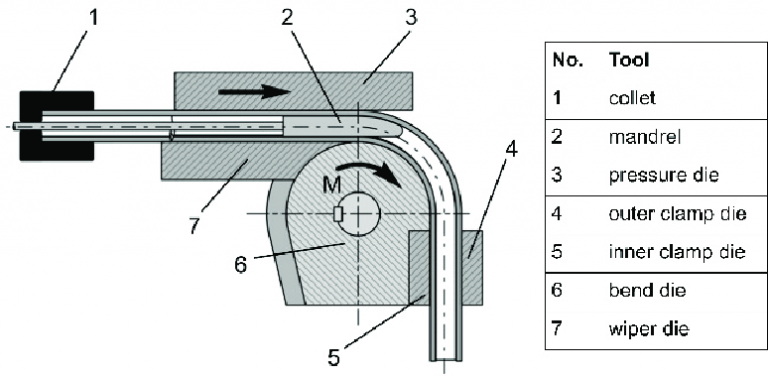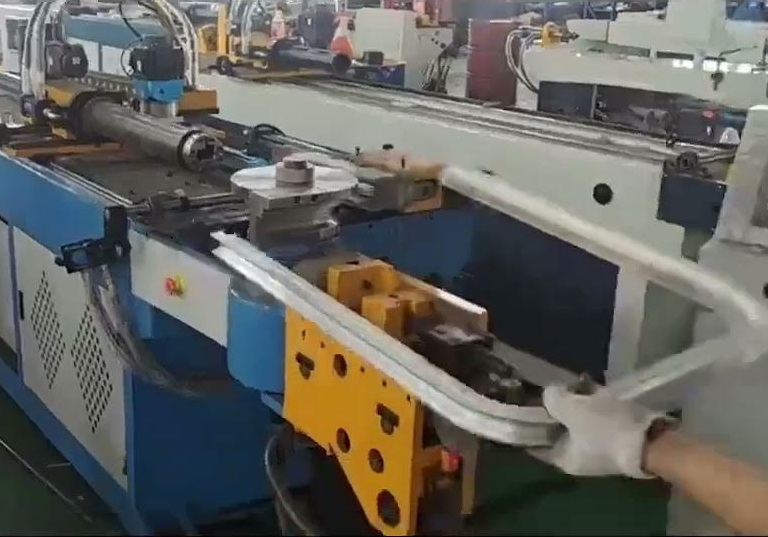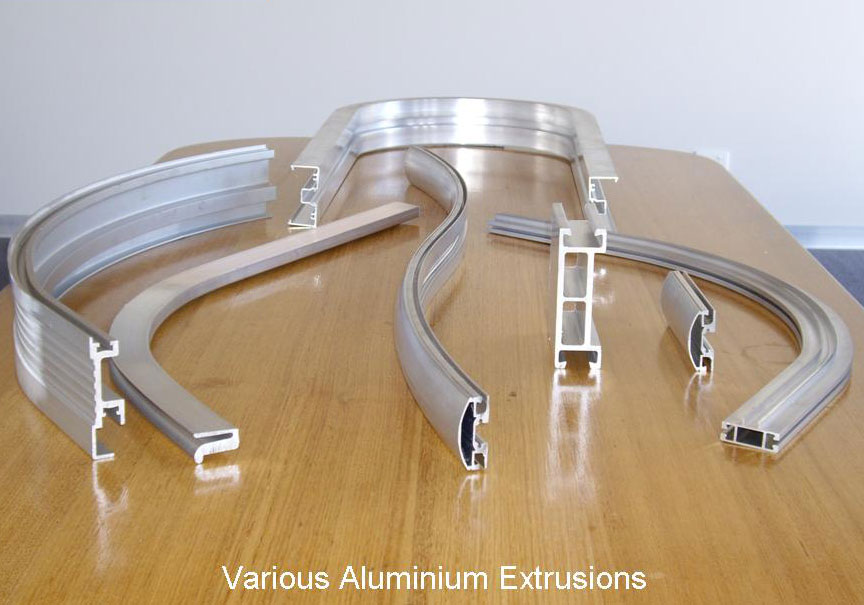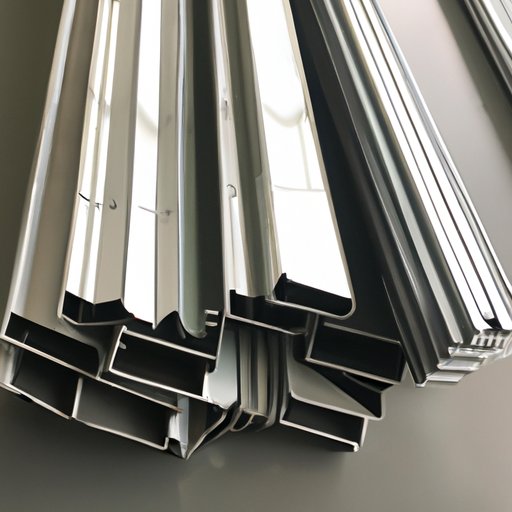Content Menu
● Introduction
● Understanding Aluminum Extrusions
● The Importance of Proper Bending Techniques
● Common Methods for Bending Aluminum Extrusions
>> 1. Roller Bending
>>> Advantages of Roller Bending:
>>> Process:
>> 2. Press Bending
>>> Advantages of Press Bending:
>>> Process:
>> 3. Rotary Draw Bending
>>> Advantages of Rotary Draw Bending:
>>> Process:
>> 4. Ram Bending
>>> Advantages of Ram Bending:
>>> Process:
>> 5. Stretch Forming
>>> Advantages of Stretch Forming:
>>> Process:
● Factors Affecting Aluminum Extrusion Bending
>> 1. Alloy Composition
>> 2. Temper
>> 3. Cross-sectional Shape
>> 4. Wall Thickness
>> 5. Bend Radius
>> 6. Lubrication
>> 7. Temperature
● Advanced Techniques and Equipment
>> 1. CNC Bending Machines
>> 2. Induction Bending
>> 3. 3D Scanning and Modeling
>> 4. Robotic Bending Systems
● Applications of Bent Aluminum Extrusions
>> 1. Architecture and Construction
>> 2. Transportation
>> 3. Furniture Design
>> 4. Signage and Displays
>> 5. Sports and Recreation
● Best Practices for Bending Aluminum Extrusions
>> 1. Material Selection
>> 2. Design for Bendability
>> 3. Tooling Maintenance
>> 4. Prototyping
>> 5. Quality Control
>> 6. Operator Training
● Conclusion
● Frequently Asked Questions
>> Q1: What is the minimum bend radius for aluminum extrusions?
>> Q2: Can all aluminum alloys be bent equally well?
>> Q3: How does bending affect the strength of aluminum extrusions?
>> Q4: Is it possible to bend aluminum extrusions with internal cavities or complex shapes?
>> Q5: How can I prevent surface defects when bending aluminum extrusions?
Introduction
Aluminum extrusions have revolutionized various industries, from architecture to aerospace, offering a perfect blend of strength, lightweight properties, and versatility. However, the true potential of these extruded profiles is unlocked when they can be shaped and bent to meet specific design requirements. This comprehensive guide delves into the intricate world of bending aluminum extrusions, exploring the techniques, methods, and equipment that make this process possible.

Understanding Aluminum Extrusions
Before we dive into the bending processes, it's crucial to understand what aluminum extrusions are. Aluminum extrusion is a manufacturing process where aluminum alloy is forced through a die with a specific cross-sectional profile. The result is a length of material with a consistent shape that can be cut and formed as needed. These extrusions can be solid, hollow, or semi-hollow, offering a wide range of possibilities for various applications.
The versatility of aluminum extrusions lies in their ability to be customized for specific uses. From simple shapes like bars and angles to complex profiles with intricate details, the extrusion process allows for incredible design flexibility. This flexibility extends to the bending process, where these straight profiles can be transformed into curved or angled components to suit particular needs.
The Importance of Proper Bending Techniques
Bending aluminum extrusions is not a simple task. It requires a deep understanding of the material properties, the right equipment, and precise techniques to achieve the desired results without compromising the integrity of the extrusion. Improper bending can lead to various issues such as:
1. Material deformation
2. Surface defects
3. Weakened structural integrity
4. Inconsistent curvature
5. Reduced functionality of the final product
Therefore, mastering the art of bending aluminum extrusions is crucial for manufacturers and fabricators who want to expand their capabilities and offer high-quality, custom-shaped components to their clients.
Common Methods for Bending Aluminum Extrusions
There are several methods available for bending aluminum extrusions, each with its own advantages and suitable applications. Let's explore some of the most common techniques:
1. Roller Bending
Roller bending is one of the most widely used methods for bending long aluminum extrusions. This technique involves passing the extrusion through a series of rollers that gradually apply pressure to create the desired curve.
Advantages of Roller Bending:
- Suitable for long, thin extrusions
- Offers high precision and consistency
- Can achieve large radius bends
- Minimal tooling costs for common profiles
Process:
1. The extrusion is fed into the machine between three or more rollers.
2. The position and pressure of the rollers are adjusted to achieve the desired bend radius.
3. As the extrusion passes through, it is gradually bent to the specified shape.
4. Multiple passes may be required for tighter bends or more complex shapes.

2. Press Bending
Press bending, also known as press brake bending, uses a press brake machine to apply localized pressure to the extrusion, causing it to bend at a specific point.
Advantages of Press Bending:
- Precise control over bend angle and location
- Suitable for creating sharp angles
- Can handle a wide range of extrusion sizes and shapes
- Relatively quick process for simple bends
Process:
1. The extrusion is placed on the lower die of the press brake.
2. The upper die (punch) descends, applying pressure to create the bend.
3. The bend angle is controlled by the depth of the punch's descent and the shape of the dies.
4. Multiple bends can be created by repositioning the extrusion and repeating the process.
3. Rotary Draw Bending
Rotary draw bending is a highly precise method that's particularly useful for creating tight radius bends in aluminum extrusions.
Advantages of Rotary Draw Bending:
- Excellent for creating tight, consistent bends - Minimizes flattening and distortion of the extrusion - Can bend complex profiles with minimal deformation - Suitable for high-precision applications
Process:
1. The extrusion is clamped to a rotating bend die.
2. As the die rotates, it draws the extrusion around its radius.
3. A pressure die holds the extrusion against the bend die to maintain shape.
4. A mandrel may be used inside hollow extrusions to prevent collapse.
4. Ram Bending
Ram bending, also known as push bending, uses a hydraulic ram to force the extrusion against a fixed form or die.
Advantages of Ram Bending:
- Can create complex, multi-plane bends
- Suitable for large, heavy extrusions
- Capable of producing tight radius bends
- Relatively simple tooling requirements
Process:
1. The extrusion is positioned against a form or die that matches the desired bend shape.
2. A hydraulic ram pushes the extrusion, forcing it to conform to the shape of the die.
3. The process may be repeated for multiple bends or more complex shapes.
5. Stretch Forming
Stretch forming is a specialized technique that's particularly useful for creating large, sweeping curves in aluminum extrusions.
Advantages of Stretch Forming:
- Ideal for creating large radius bends
- Minimizes springback in the material
- Can produce smooth, consistent curves
- Suitable for architectural and aerospace applications
Process:
1. The extrusion is clamped at both ends and stretched to its yield point.
2. While under tension, the extrusion is wrapped around a form block.
3. The tension is released, allowing the extrusion to retain its new shape.
4. This method can create precise, large-scale curved components.

Factors Affecting Aluminum Extrusion Bending
Several factors can influence the success of the bending process and the quality of the final product:
1. Alloy Composition
Different aluminum alloys have varying levels of ductility and strength, which affect their bendability. Softer alloys like 6063 are generally easier to bend than harder alloys like 6061.
2. Temper
The heat treatment condition of the aluminum extrusion plays a crucial role in its formability. Annealed (O temper) extrusions are typically easier to bend than those in T6 temper.
3. Cross-sectional Shape
The profile of the extrusion can significantly impact the bending process. Symmetrical shapes are generally easier to bend consistently than asymmetrical ones.
4. Wall Thickness
Thicker walls provide more resistance to deformation during bending but may require more force. Thinner walls are easier to bend but more prone to buckling or collapse.
5. Bend Radius
The tightness of the bend affects the stress on the material. Tighter bends increase the risk of cracking or distortion, especially on the outer radius.
6. Lubrication
Proper lubrication during the bending process can reduce friction and help prevent surface defects.
7. Temperature
Some bending methods may involve heating the aluminum to increase its formability. However, care must be taken not to overheat and weaken the material.
Advanced Techniques and Equipment
As technology advances, so do the methods for bending aluminum extrusions. Some cutting-edge techniques and equipment include:
1. CNC Bending Machines
Computer Numerical Control (CNC) bending machines offer unprecedented precision and repeatability in bending operations. These machines can be programmed to perform complex, multi-axis bends with minimal human intervention.
2. Induction Bending
This method uses induction heating to soften a specific area of the extrusion just before bending. It allows for tighter bends with less springback and reduced risk of cracking.
3. 3D Scanning and Modeling
Advanced 3D scanning technology can be used to create precise digital models of bent extrusions, allowing for quality control and reverse engineering of complex shapes.
4. Robotic Bending Systems
Robotic arms equipped with specialized end effectors can perform intricate bending operations with high precision and consistency, especially for mass production.
Applications of Bent Aluminum Extrusions
The ability to bend aluminum extrusions opens up a world of possibilities across various industries:
1. Architecture and Construction
Curved aluminum extrusions are used in modern building facades, window frames, and decorative elements, adding fluidity and unique design features to structures.
2. Transportation
In the automotive and aerospace industries, bent extrusions are used for lightweight structural components, body frames, and interior design elements.
3. Furniture Design
Curved aluminum profiles are popular in contemporary furniture design, creating sleek, modern pieces with smooth lines and ergonomic shapes.
4. Signage and Displays
Bent extrusions are often used in creating eye-catching signage, exhibition displays, and retail fixtures.
5. Sports and Recreation
From bicycle frames to gym equipment, bent aluminum extrusions provide strength and lightweight properties crucial for sporting goods.
Best Practices for Bending Aluminum Extrusions
To achieve the best results when bending aluminum extrusions, consider the following best practices:
1. Material Selection
Choose the appropriate alloy and temper for your bending requirements. Consult with material suppliers or extrusion experts if unsure.
2. Design for Bendability
When designing parts that require bending, consider the limitations of the material and bending process. Avoid sharp corners and allow for sufficient bend radii.
3. Tooling Maintenance
Regularly inspect and maintain bending equipment and tooling to ensure consistent results and prevent surface defects.
4. Prototyping
For complex or critical components, create prototypes to test the bending process and identify any potential issues before full-scale production.
5. Quality Control
Implement rigorous quality control measures, including dimensional checks and visual inspections, to ensure bent extrusions meet specifications.
6. Operator Training
Invest in proper training for operators to ensure they understand the nuances of working with aluminum extrusions and the specific bending equipment being used.
Conclusion
Bending aluminum extrusions is a sophisticated process that combines engineering knowledge, material science, and craftsmanship. By understanding the various methods available and the factors that influence the bending process, manufacturers and designers can push the boundaries of what's possible with aluminum extrusions. As technology continues to advance, we can expect even more innovative techniques and applications for bent aluminum profiles, further cementing their place as a versatile and indispensable material in modern manufacturing and design.

Frequently Asked Questions
Q1: What is the minimum bend radius for aluminum extrusions?
A1: The minimum bend radius depends on several factors, including the alloy, temper, and cross-sectional shape of the extrusion. As a general rule, the minimum bend radius is typically 3-5 times the thickness of the material for solid sections, and 5-7 times the wall thickness for hollow sections. However, this can vary, and it's best to consult with the extrusion manufacturer or a bending specialist for specific recommendations.
Q2: Can all aluminum alloys be bent equally well?
A2: No, not all aluminum alloys have the same bendability. Softer alloys like 6063 are generally easier to bend than harder alloys like 6061 or 7075. The temper (heat treatment condition) of the alloy also plays a significant role. Annealed (O temper) extrusions are typically more formable than those in T6 temper, for example.
Q3: How does bending affect the strength of aluminum extrusions?
A3: Bending can affect the strength of aluminum extrusions in several ways. The bending process introduces stress into the material, which can cause work hardening in some alloys, potentially increasing strength but reducing ductility. However, excessive bending or improper techniques can lead to weakening, especially at the bend point. Proper design and bending techniques are crucial to maintain the structural integrity of the extrusion.
Q4: Is it possible to bend aluminum extrusions with internal cavities or complex shapes?
A4: Yes, it is possible to bend extrusions with internal cavities or complex shapes, but it requires careful consideration and often specialized techniques. For hollow extrusions, mandrel bending is often employed to prevent collapse of the internal structure. For complex shapes, custom tooling and advanced bending methods like rotary draw bending may be necessary. It's important to work closely with experienced fabricators when dealing with such profiles.
Q5: How can I prevent surface defects when bending aluminum extrusions?
A5: To prevent surface defects when bending aluminum extrusions:
1. Use proper lubrication during the bending process to reduce friction.
2. Ensure tooling is clean and well-maintained to prevent scratches or marks.
3. Choose the appropriate bending method for the specific extrusion profile.
4. Consider using protective films or sleeves on the extrusion during bending.
5. Avoid over-bending, which can cause stretching and surface distortion.
6. For some applications, consider using a sacrificial outer layer that can be removed after bending.
Remember, the key to successful aluminum extrusion bending lies in understanding the material properties, choosing the right techniques, and working with experienced professionals when tackling complex projects.























